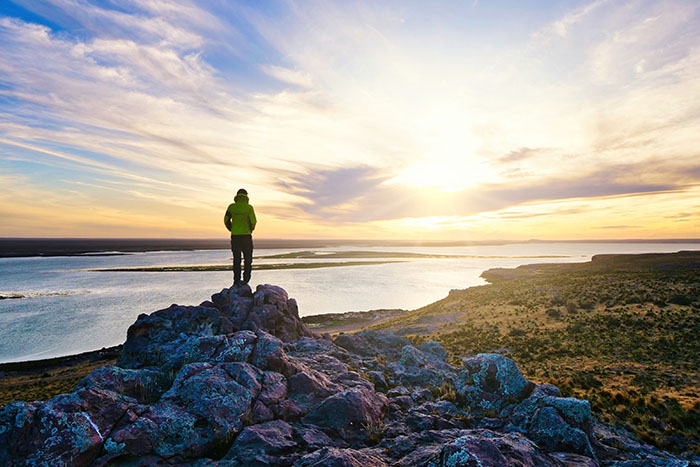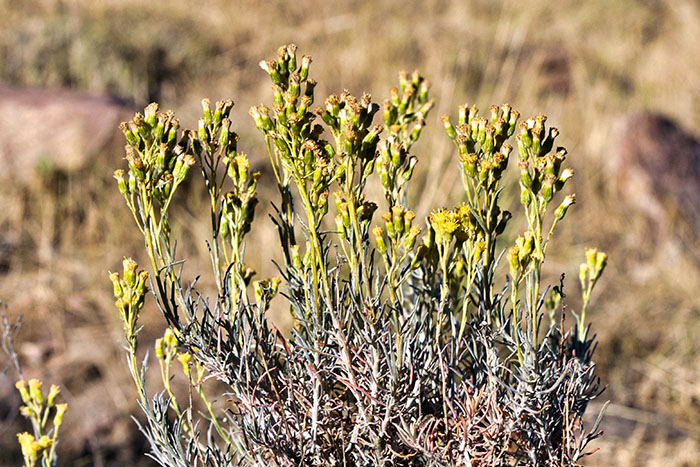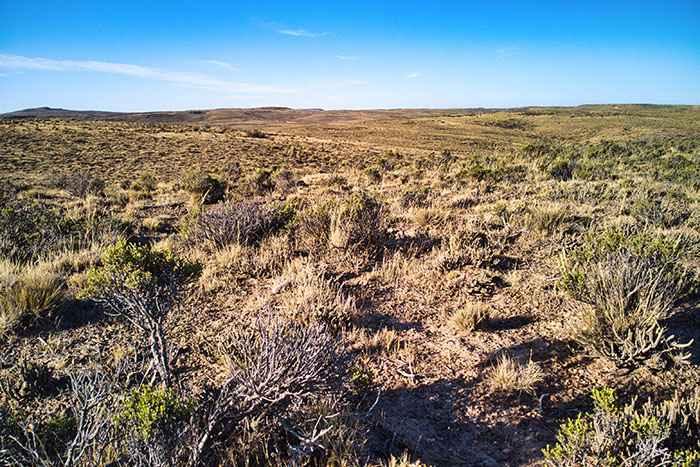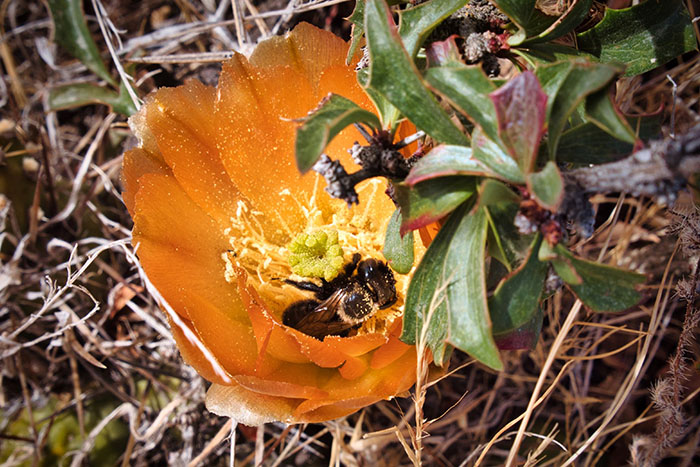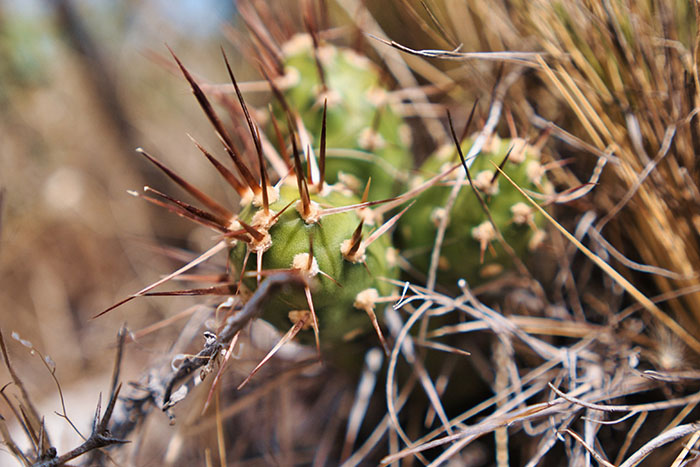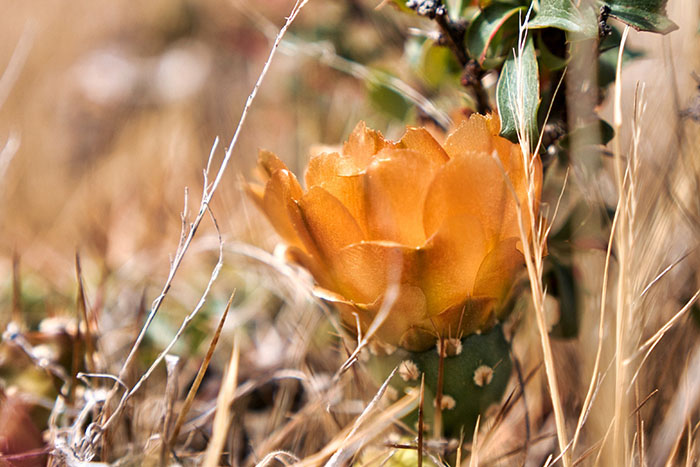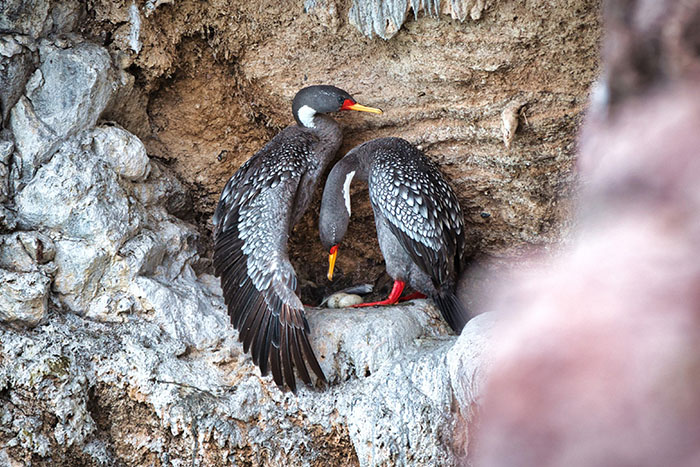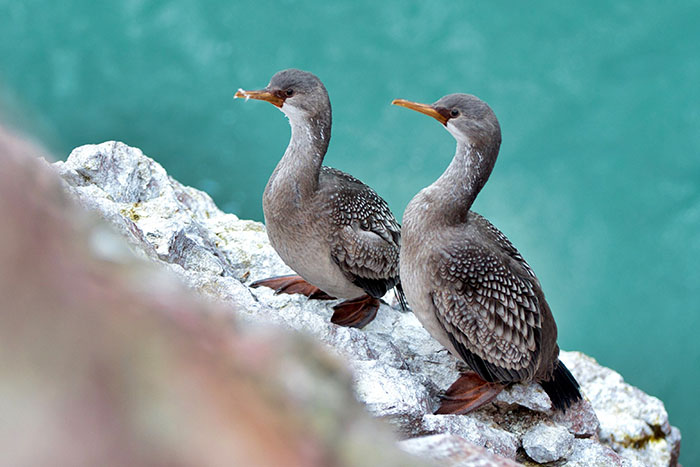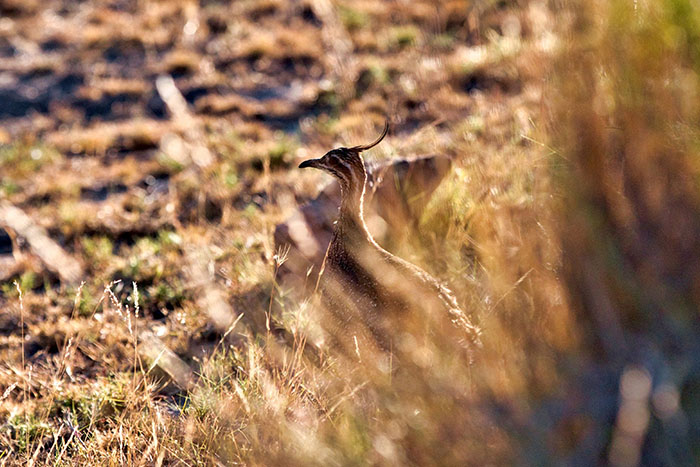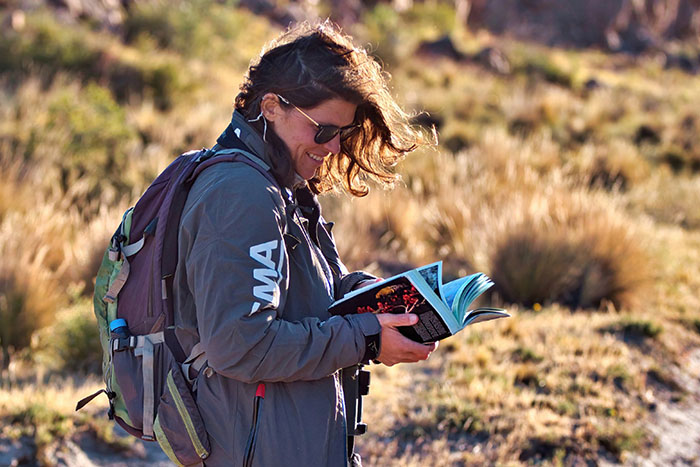Biodiversity Evolution⎢Argentina⎢2022
The Cormorant
of the Ria Deseado
In partnership with Darwin Expediciones


In 1833, Darwin embarked on his first exploration of the Patagonian steppes, specifically in Puerto Deseado (then known as Port Désiré). His vibrant descriptions centered on the landscapes of Ria Deseado, the estuary of the Deseado River, where he marveled at the scarcity of resident animals, particularly the birds. Even today, 200 years later, our attention remains fixed on these avian inhabitants.
Assisting us in this pursuit is scientist Annick Morgenthaler, serving as our knowledgeable guide. She assures us that the landscapes have likely remained mostly unchanged since Darwin’s time, owing to the low human density in the region. Consequently, the populations of various bird species have maintained stability over the years, with one notable exception: the Red-Legged Cormorant.

1833
The zoology of Patagonia is as limited as its Flora. On the arid plains a few black beetles (Heteromera) might be seen slowly crawling about, and occasionally a lizard darted from side to side. Of birds we have three carrion hawks, and in the valleys a few finches and insect-feeders. An ibis (Theristicus melanops—a species said to be found in central Africa) is not uncommon on the most desert parts: in their stomachs I found grasshoppers, cicadæ, small lizards, and even scorpions.
– Charles Darwin, Voyage of the Beagle, 1833
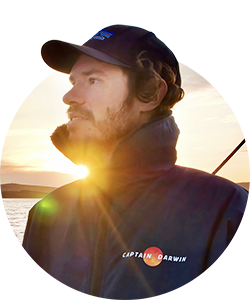
2022
The biodiversity of Ria Deseado has seen minimal changes since Darwin’s time, mainly due to the region’s low human activity.
However, the concerning decline of species such as the Red-Legged Cormorant points to the growing impact of human activities on natural ecosystems, including fishing, mining, and the introduction of invasive species.
Furthermore, the unpredictable effects of global warming add another layer of complexity to the situation. The combination of these factors makes it challenging to anticipate the future state of these delicate ecosystems.

1833
The zoology of Patagonia is as limited as its Flora. On the arid plains a few black beetles (Heteromera) might be seen slowly crawling about, and occasionally a lizard darted from side to side. Of birds we have three carrion hawks, and in the valleys a few finches and insect-feeders. An ibis (Theristicus melanops—a species said to be found in central Africa) is not uncommon on the most desert parts: in their stomachs I found grasshoppers, cicadæ, small lizards, and even scorpions.
– Charles Darwin, Voyage of the Beagle, 1833

2022
The biodiversity of Ria Deseado has seen minimal changes since Darwin’s time, mainly due to the region’s low human activity.
However, the concerning decline of species such as the Red-Legged Cormorant points to the growing impact of human activities on natural ecosystems, including fishing, mining, and the introduction of invasive species.
Furthermore, the unpredictable effects of global warming add another layer of complexity to the situation. The combination of these factors makes it challenging to anticipate the future state of these delicate ecosystems.
Discovery of the Patagonian steppes
We started our exploration around Puerto Deseado, on the north bank of the Ria. Here, the steppe stretches as far as the eye can see. Of it, Darwin writes: “Here and there scattered tufts of brown wiry grass are supported, and, still more rarely, some low thorny bushes.” I photographed one of these bushes, of the genus Senecio and whose determination of the species would require further examination (there are 32 species of this genus in Patagonia alone!).
The steppe climate characterizes regions that are too dry for trees to grow, but not dry enough to become deserts. Most of Patagonia Argentina falls under this climate. Darwin writes: ” Yet in passing over these scenes, without one bright object near, an ill-defined but strong sense of pleasure is vividly excited. One asked how many ages the plain had thus lasted, and how many more it was doomed thus to continue.”
“None can reply—all seems eternal now.
The wilderness has a mysterious tongue,
Which teaches awful doubt.”
– Percy Bysshe Shelley – Lines on Mont Blanc, quoted by Charles Darwin in The Voyage of the Beagle.
Darwin’s cactus
This is Maihueniopsis darwinii, a small cactus found in the Patagonian steppe. You read correctly: the name of the species refers to Darwin, the name of the plant having been given by John Stevens Henslow in homage to our favorite naturalist. Henslow was a botanist, he was one of Darwin’s mentors, and it was thanks to him that Charles embarked on a circumnavigation of the globe on the Beagle!
Maihueniopsis darwinii was first observed by Darwin in Puerto Deseado, in 1833 or 1834. He curiously remarked that the cactus flower had the incredible ability to move when touched: “I found here a species of cactus […] which was remarkable by the irritability of the stamens, when I inserted either a piece of stick or the end of my finger in the flower.”
This phenomenon is known today as thigmonasty, and describes any movement of a plant organ in response to a physical stimulus. In the case of Darwin’s cactus, it is the stamens of the flower that close towards the pistil (the center of the flower) to promote pollination during the passage of pollinating insects such as bees or butterflies.
Like Darwin, we and Margot were completely fascinated by the rapid movements of the flower. In addition, we had the chance to see a bee collecting pollen inside, and to see that the cactus technique was rather effective (see on the photo how the pollen is deposited on the whole body of the bug). Maihueniopsis darwinii has been doing quite well since Darwin’s time, as the species is listed as Least Concern by the International Union for Conservation of Nature (IUCN).
The Red-Legged Cormorant
The Red-Legged Cormorant, scientifically known as Phalacrocorax gaimardi, owes its name to the French naturalist Joseph Paul Gaimard, which interestingly connects to the tale of Darwin’s cactus I shared with you earlier. This coastal bird is easily recognized by the red color of its legs and is known for its feeding habits, diving up to 15 meters below the surface to catch small rock fish and invertebrates.
Our observations led us to a colony of these cormorants on the north shore of Ria Deseado, its precise location shared by Annick Morgenthaler, a local biologist specialized in seabirds. With Margot and Félix, we embarked on a dinghy to document the breeding season of these magnificent birds.
The Red-Legged Cormorant population has faced a concerning decline, making it the only seabird species in the region experiencing such a decrease, with about 2,000 breeding birds on the Atlantic side and 18,000 on the Pacific side of Patagonia. The IUCN classifies the species as near threatened. This information raised our concern, and we wondered how we could contribute to helping them.
Our mission was to capture photos and videos to document the breeding progress of the cormorant chicks. Annick shared that some eggs had not yet hatched, while some young birds were already ready to take flight, an intriguing observation.
Despite our efforts, the mystery behind their decline remains unsolved. Our understanding of the natural world is continually evolving, piece by piece. Various factors could contribute to the decline, including climate change, altering landscapes, plastic pollution, or the impacts of industrial fishing, or even a combination of natural causes.
Nevertheless, scientists are closely monitoring the colony’s evolution. If the decline in population continues, we hope that science will shed light on the root causes, which may then lead to potential solutions to aid in the conservation of these magnificent birds.
The hare, an invasive species of the steppe
As we continue our exploration of the captivating biodiversity around Puerto Deseado, each step in the Patagonian steppe leaves us in awe. Margot, being a bird enthusiast, always carries her binoculars and identification book, which proves essential in recognizing the plethora of bird species we encounter.
Today’s highlight was the sighting of an elegant Tinamou (Eudromia elegans)! These fascinating birds are exclusive to the American continent and are known as terrestrial birds due to their poor flying abilities. The “elegant” variation is found primarily in Argentina and partly in Chile. Despite their shyness, we were fortunate to observe this beautiful bird up close. Its wide distribution over 1,400,000 square kilometers grants it the status of Least Concern on the IUCN Red List.
Continuing our journey through the steppe, we encountered a European hare (Lepus europaeus). Unlike the elegant Tinamou, this species is not native to the region but rather invasive. Invasive species are the second leading cause of biodiversity loss and species extinction, with habitat destruction being the primary cause. Their introduction is often linked to human movements and activities. Historically, during the great explorations of the 16th century, European ships transported various animals like rats, rabbits, and cats, spreading them across the globe. Today, with globalization and intensified world trade, the risks of invasive species spreading have increased significantly, further threatening native ecosystems and species. Vigilance is essential to preserve the delicate balance of the natural world.



Donate
Help us spread the word about biodiversity by supporting our Patreon!
Social Networks
Follow Captain Darwin on Social Networks to follow our adventures!
Send an email
A question? Something to say? A word of encouragement? Send us an email!
© Captain Darwin 2023 - 1 rue des Senneurs - 29 900 Concarneau - FRANCE

